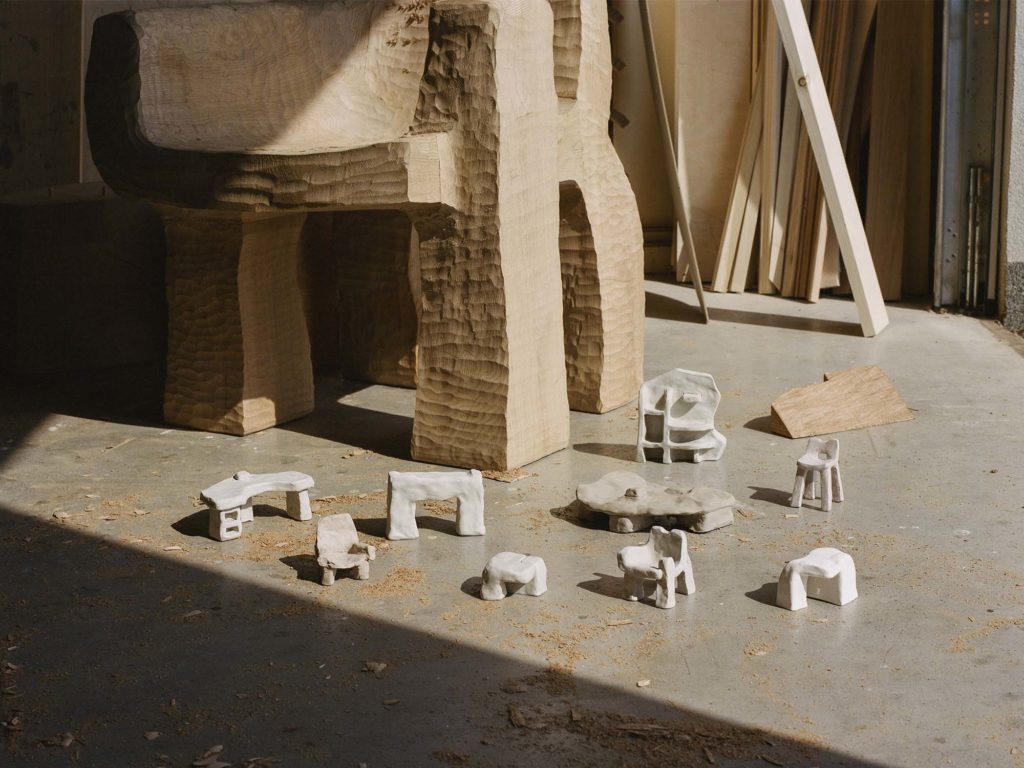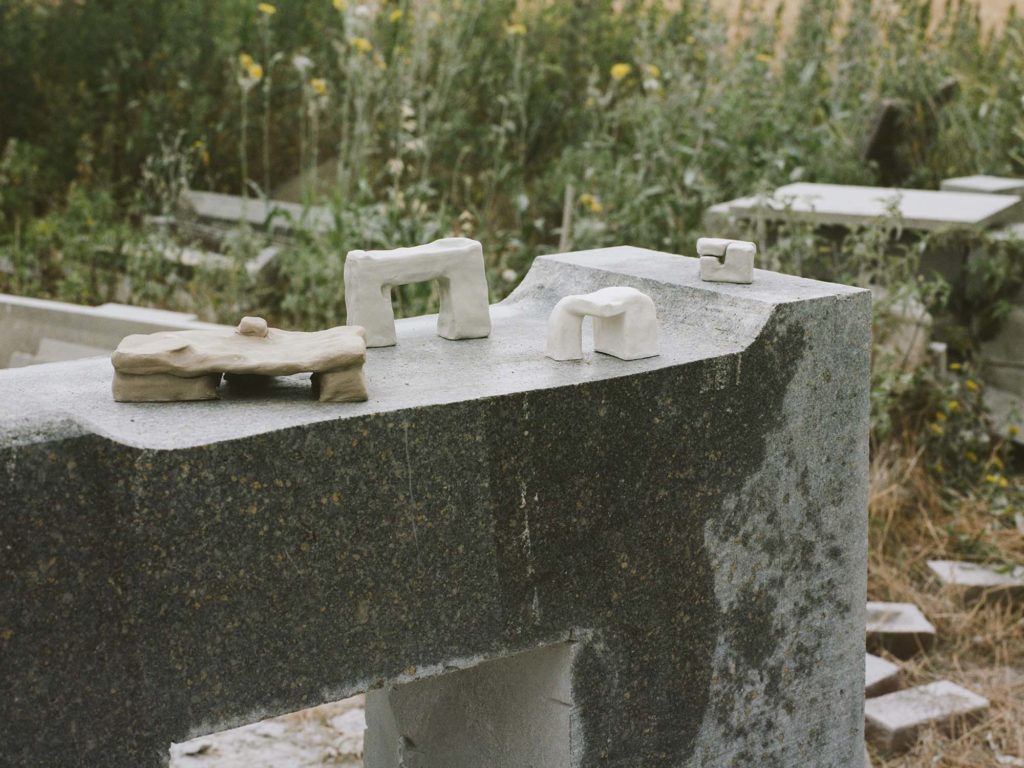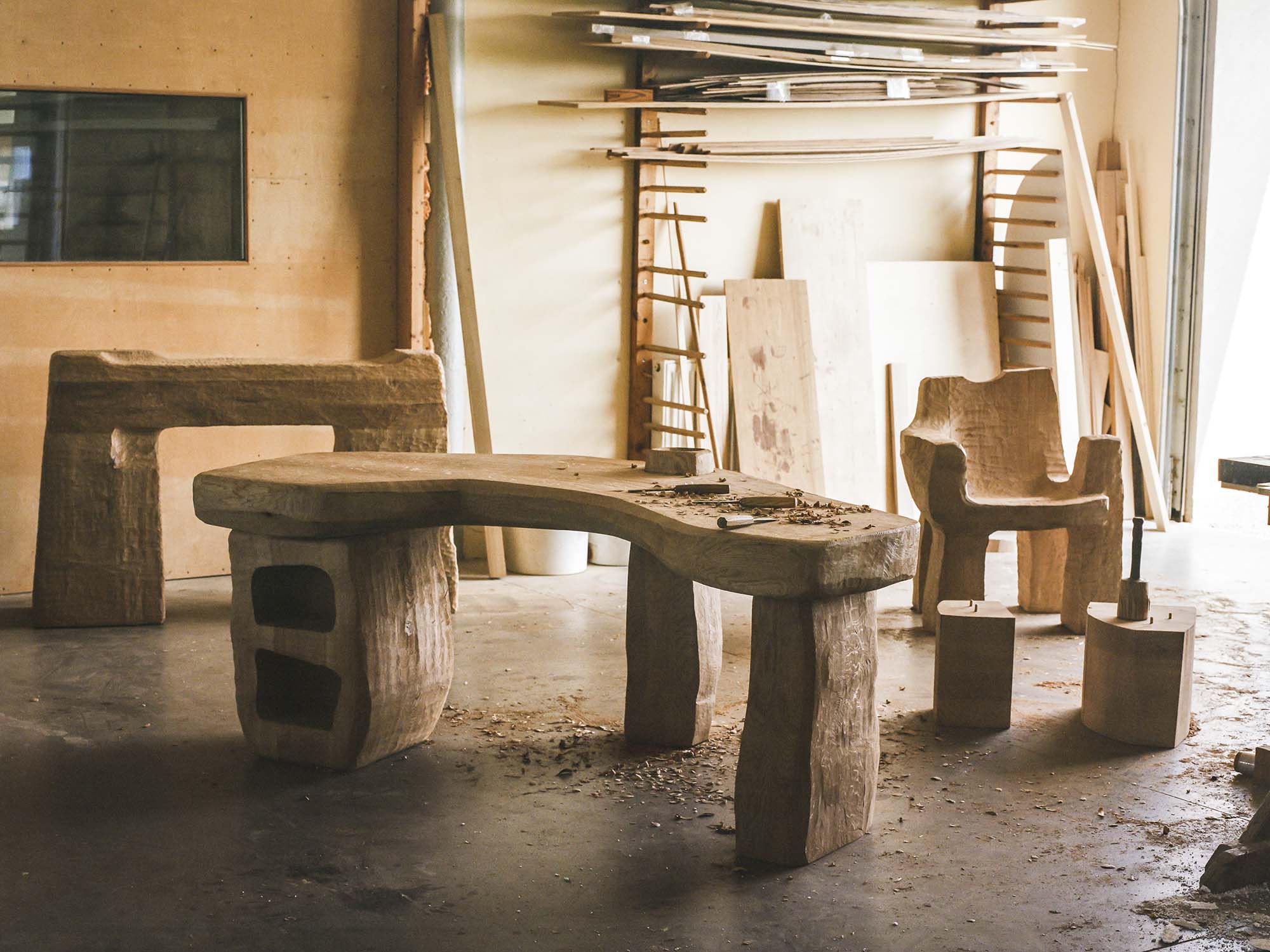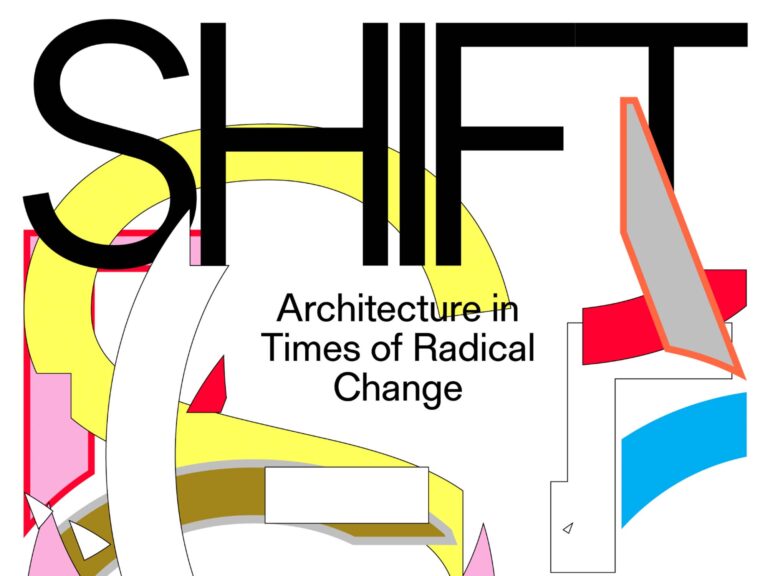By Glenn Adamson
“And did those feet, in ancient time, walk upon England’s mountains green?”
So begins William Blake’s Jerusalem, possibly the most famous British poem that’s not by Shakespeare. Though its span is brief – only sixteen lines – its compass is vast, postulating a time when England was quite literally heaven on earth, railing against the “dark Satanic mills” of Blake’s own, industrializing time, and for good measure, calling for a “chariot of fire.” The 1981 film took its title from Blake’s verse, which also inspired Edward Elgar’s immortal hymn – written exactly a century years ago, in 1922, and often described as England’s “alternative national anthem” – as well as Jez Butterworth’s 2009 Jersualem, a contender for the most significant English play of recent times.
The world of design now has an entrant to this pantheon, Faye Toogood’s new body of work, Assemblage 7: Lost and Found. (Devotees of her work will know that Toogood develops her designs in discrete groups, each of which encompasses a diverse range of forms, while constituting an aesthetic and conceptual microcosm.) While not directly inspired by Blake’s poem, it resonates to the same chord, setting furniture forth as a storytelling device on a par with poetry, cinema, and drama. Also like Blake, Toogood concerns herself in these objects with a fundamental sort of Englishness. This is not entirely new for her; she is perhaps the most British of contemporary British designers, and in her past work, has often drawn on the nation’s vernacular forms and traditions of making. But this latest Assemblage has unusually deep roots, signaled in the overall title, which implies an archaeological situation: things that have been somehow lost from view, and then reclaimed. So too with the titles of individual works. Plot, Barrow, Cairn, Mound – these are places that have all long hidden secrets, yet may still disclose them.

The works more than merit these names. They are hard-won, arriving with the eternal force of discovery. And they are, quite literally, excavated – the forms realized through subtractive carving into wood and stone, a process more typically encountered in sculpture than furniture design. The two materials used both have powerful resonance in British history. Oak, of course, is the country’s most reliable building timber, employed for centuries to make houses and ships. Though gradually displaced by finer woods like walnut and imported mahogany, oak was the principal choice for furniture in the medieval era. Those simple, muscular forms were beloved of the British Arts and Crafts, and exert their own evident influence here. Toogood has had her carvers apply an all-over pattern of chiseled facets, and had the wood treated with a rich brown stain. For a few pieces she is using precious bog oak, which, having been naturally sealed off for years beyond counting in mud and water, has a dark luster unlike anything else on earth. Other works in the Assemblage are carved to a smooth finish in Purbeck Marble – so named because it is sourced from the isle of Purbeck, off the Dorset coast – a material often encountered in older churches. It’s actually not a true marble, but a limestone, packed with shell fossils. When carved and polished, lace-like loops of white appear in the stone, ancientness emerging into the light.
The layers run still deeper, and in other directions. There is, most proximately, Toogood’s most recent Assemblage, number 6 in the series, which was titled Unlearning. The objects in that collection were “found” in a different way, quickly modeled in the studio in impermanent materials like cardboard, tape and wire, and then made at full functional scale – a seemingly magical feat of transmutation. The bracing directness of that conception is continued here. The shapes of Lost and Found have a precedent in the clay-based works of Assemblage 6, and in their generous proportions and overall plasticity, do preserve the hand-modeled character of that 3d sketching material. But carving is their lifeblood. Particularly when gathered together in a group, the pieces recall the rings of shaped standing stones that are Britain’s most ancient works of art (one might also see them as architecture; in fact, of course, they precede the very existence of such categories). The reference to this cultural source, antedating the arrival of Christianity to the British Isles, lends the Assemblage an open-ended atmosphere of sacred rite, a ceremonial quality that inflects the nominal functions of the objects as tables or seating.


Summoning Stonehenge is serious business, and Lost and Found does have a certain gravitas – a reflection, perhaps, of the pandemic-shadowed moment in which the pieces were conceived. It would not be wrong to see the works as markers, commemorating a communal moment of trial. Having said this, the shapes are also playful, even wayward. Shapes lock into one another like puzzle pieces, and their contours resemble not just those of ancient megaliths, but also the meandering topologies of the wide-open landscape in which those stones were set. The immediacy of the carved surfaces is counterbalanced by a gentler suggestion of erosion, the slow relentless forces of wind and water. They are like stratigraphies, exposed.
This thought returns us, again and at last, to archaeology. Design is always a matter of searching in the dark, not knowing quite what one might find. That process and its various registers – practical, conceptual, experiential – has been the thematic focus for Toogood for some time, and in Lost and Found, it is manifested in physical form. The objects are metaphorical equivalents to the underground caches that archaeologists burrow towards, then carefully extract: the former cavities of burials, waste pits, house foundations. As is demonstrated by the success of the recent film The Dig (a fictionalized account of the excavation of the Anglo-Saxon burial site Sutton Hoo), the British set great store by this sort of thing: it’s equal parts rigor and romanticism, careful craft and unreasonable optimism. Underneath it all is a well of cultural memory, yielding its secrets up from the ground, echoing down through the centuries. There’s so much still to be discovered, here, in England’s green and pleasant land.
This essay was originally published in exhibition catalogue Faye Toogood | Assemblage 7: Lost and Found, Friedman Benda, Los Angeles, CA, October 2022.










